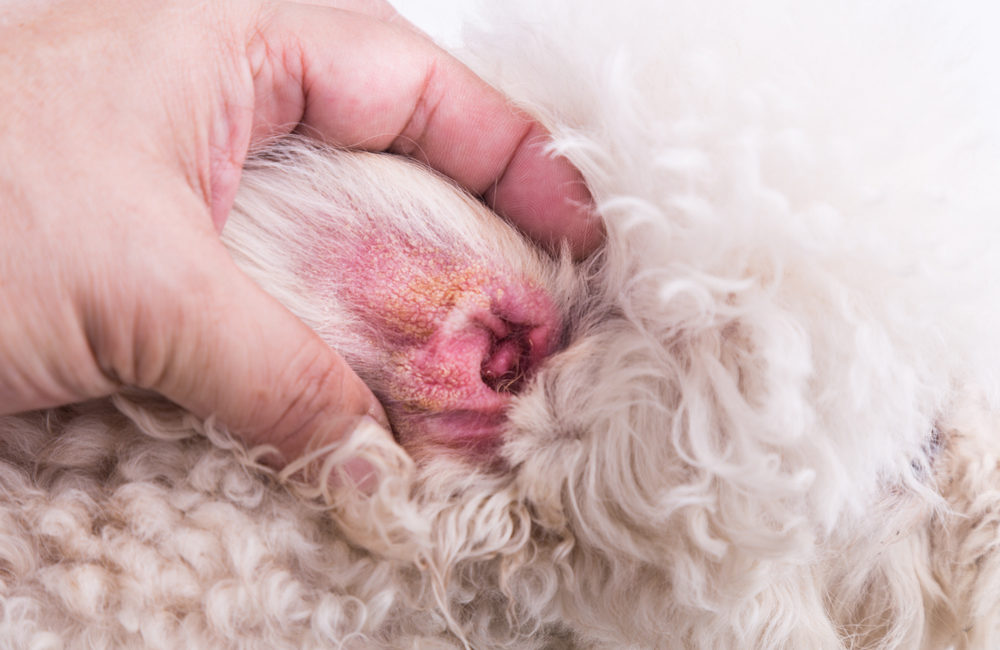Broken down, the word “Aural” means ear, “Hematoma” means an accumulation of blood outside a blood vessel. An aural hematoma is a collection of blood between the cartilage plate and surface of the ear. It will appear soft and fluid-filled on the pinnae or flap portion of the ear. It may become turgid or tight if it fills full. The exact cause of an aural hematoma is not completely understood, though it is commonly seen after aggressive head shaking or trauma to the ear pinna. Aural hematomas are more frequent in patients with ear infections and allergies. It is often unilateral (one side only) but less commonly can occur in both ears.
The treatment for an aural hematoma is the process of removing the accumulated blood from the ear pinna. It will be drained at your pet’s first appointment and every three days after that. It could take up to three or four treatments for it to heal, as long as the blood the ear produces decreases at each visit.
Draining the ear is the most favourable and least invasive treatment option as well as the least expensive. There is also the option of surgical repair. In a small percentage of cases, we need to move forward with surgery if draining is ineffective and recurrence is persistent.
When we drain the ear, we first disinfect the pinnae and apply a gel on the skin to freeze the area. Next, we insert a needle and use a syringe to pull the free blood out of the ear flap. A small amount of steroid is then injected into the area we just drained. It is to reduce inflammation and allow the ear to heal.
On occasion, we send our patients home with Prednisone (an oral steroid) to assist with itchy skin or swelling. Trazodone may be prescribed to be given 1 – 2 hours before your next appointment to reduce stress and anxiety for the next ear drain appointment. We may also send home medication to treat an ear infection if that is the cause of the head shaking.
An aural hematoma is not life-threatening, however, if left untreated it can be a very painful process for your pet and result in a deformity of the animal’s ear.




